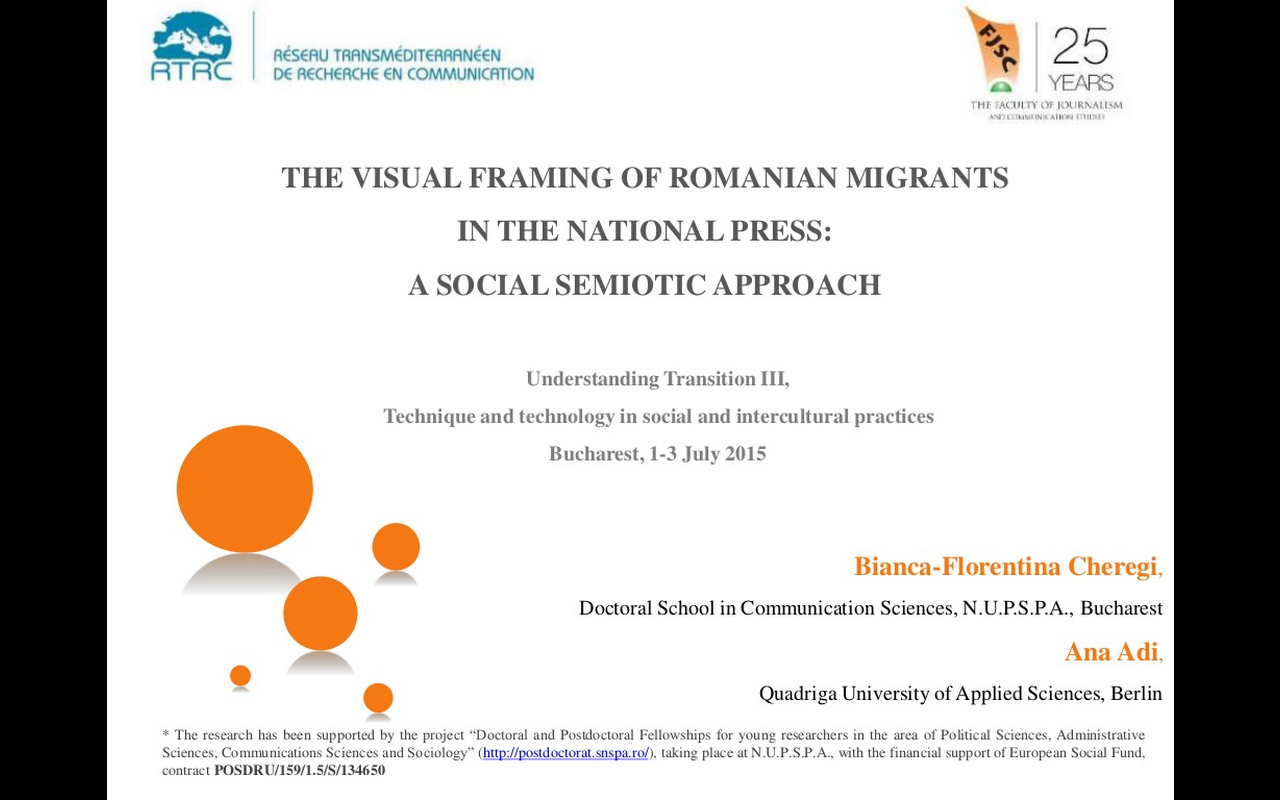I had the pleasure to collaborate recently with Bianca Cheregi, allergist PhD researcher at the Doctoral School in Communication Sciences from the National University of Political  Science and Administrative Studies on a research paper exploring the role news images play in framing Romanian immigrants to the UK and how they construct the social issue of migration, in the context of freedom of movement for workers in Great Britain. Bianca presented the results of our paper at the UNDERSTANDING TRANSITION III - Technique and technology in social and intercultural practices conference organized at the beginning of July in Bucharest by the Faculty of Journalism and Communication Studies of the University of Bucharest (FJSC) and Trans-Mediterranean Network of Communication Research (RTRC).
Context
An integral part of Bianca’s doctoral research, our paper is set in the context of the lifting of restrictions limiting the access of Romanian and Bulgarian citizens to the job market in the EU on January 1, 2014 and the emergence of anti-Romanian immigration communication and campaigns within the UK. It focuses mainly on the 2013 “Don’t Come to Britain†campaign which spurred a debate about migration and many social media spin-offs. The Romanian media responded with many campaigns among them being “Why don’t you come over?†campaign (Gândul, January 2013), â€Let’s Change the Story†(Gândul, January 2014), â€The Truth About Romanian People in Great Britain†(Adevărul, March 2014) and, more recently â€Romanians in the UK†(ProTv, April 2015).
Method
Using a qualitative and social semiotic approach, based on Kress and van Leeuwen’s (1996/2006) framework, our paper analyses 101 press photographs and captions from the digital editions of three Romanian newspapers (Adevărul, Gândul and Jurnalul Național), published during January 2013 – March 2014. By regarding the visuals as independently organized and structured messages, the analysis considers their positioning on the web page as well as their modes of representation, interaction, and composition (framing).
Results
Our paper notes the emergence of three dominant visual frames: the public security, economic and employment frames. Additionally, we show that the Romanian press is very conflicted about Romania’s national representation. While dismissing the stereotypes about migrants, the press also reinforces Roma stereotypes and fully imports the frames from the British press. We conclude that these visual and media discourses from home and abroad are seeking, contesting and constantly reshaping what in fact is at the heart of Romanian’s identity and its contribution to Europe.
